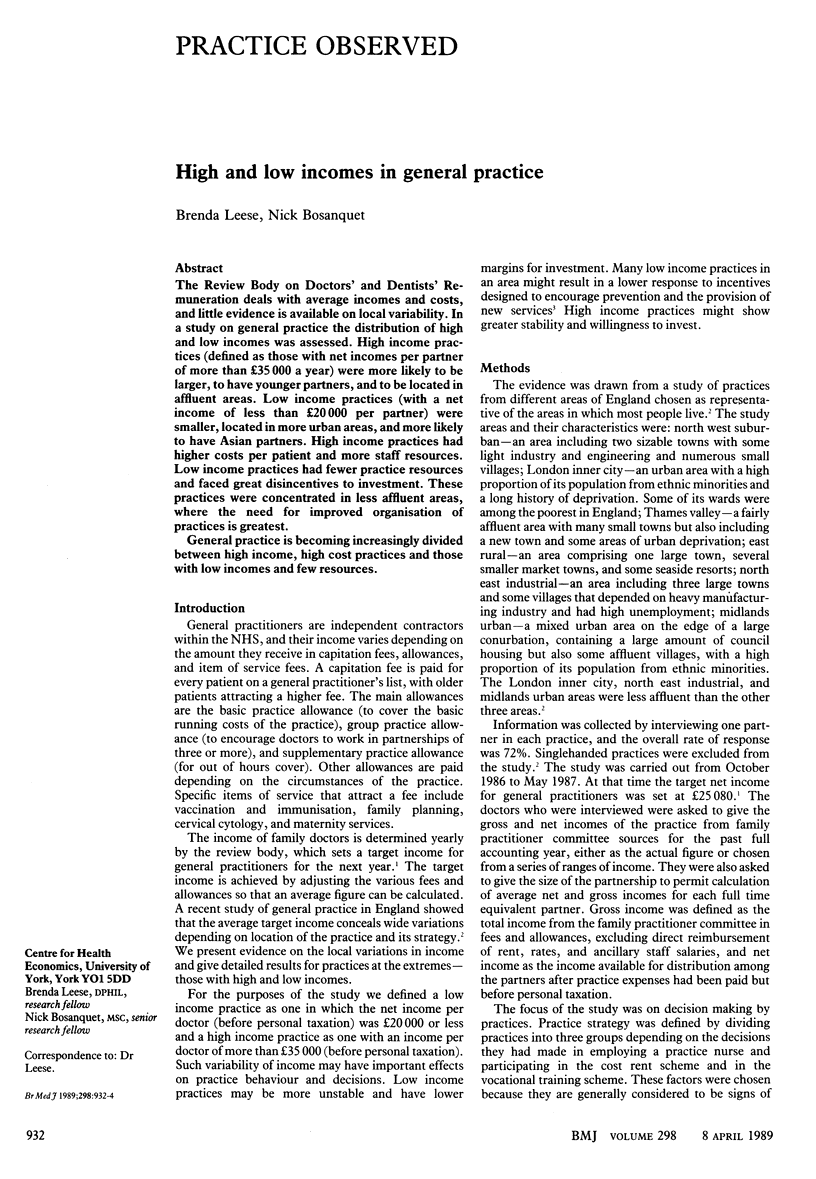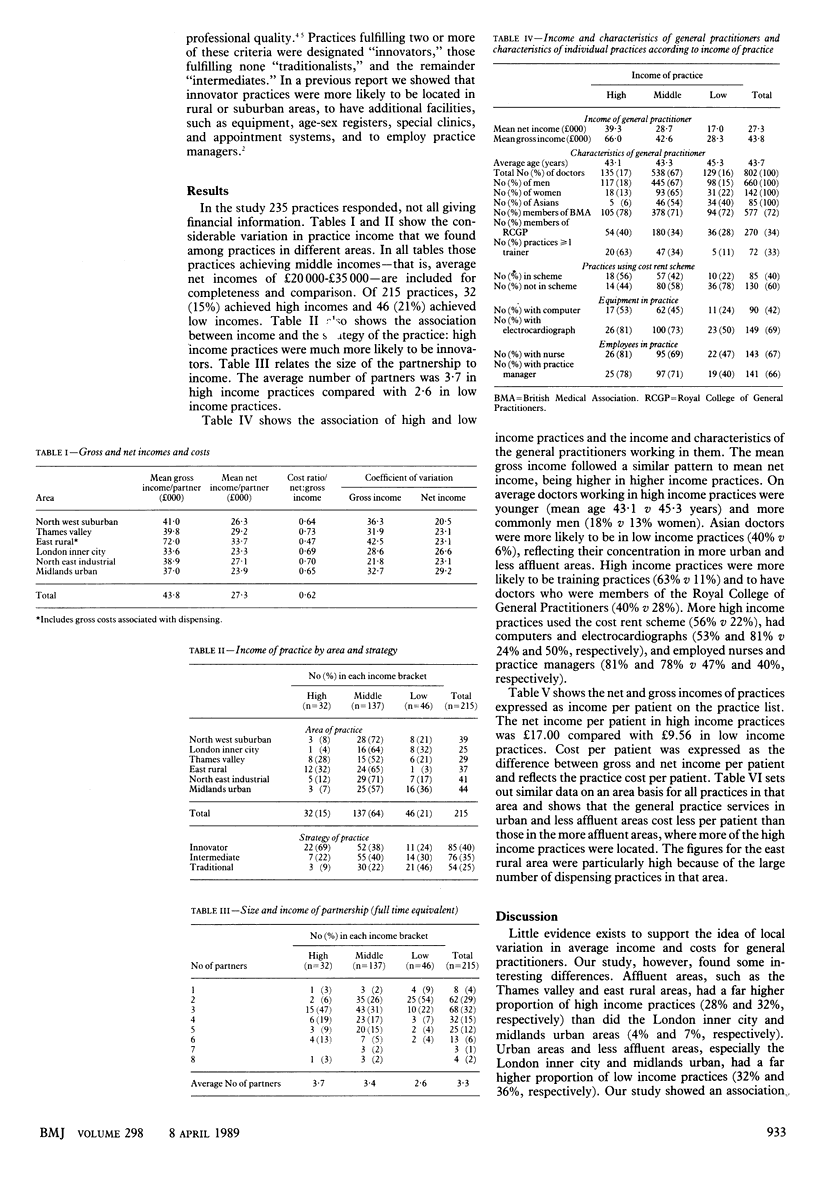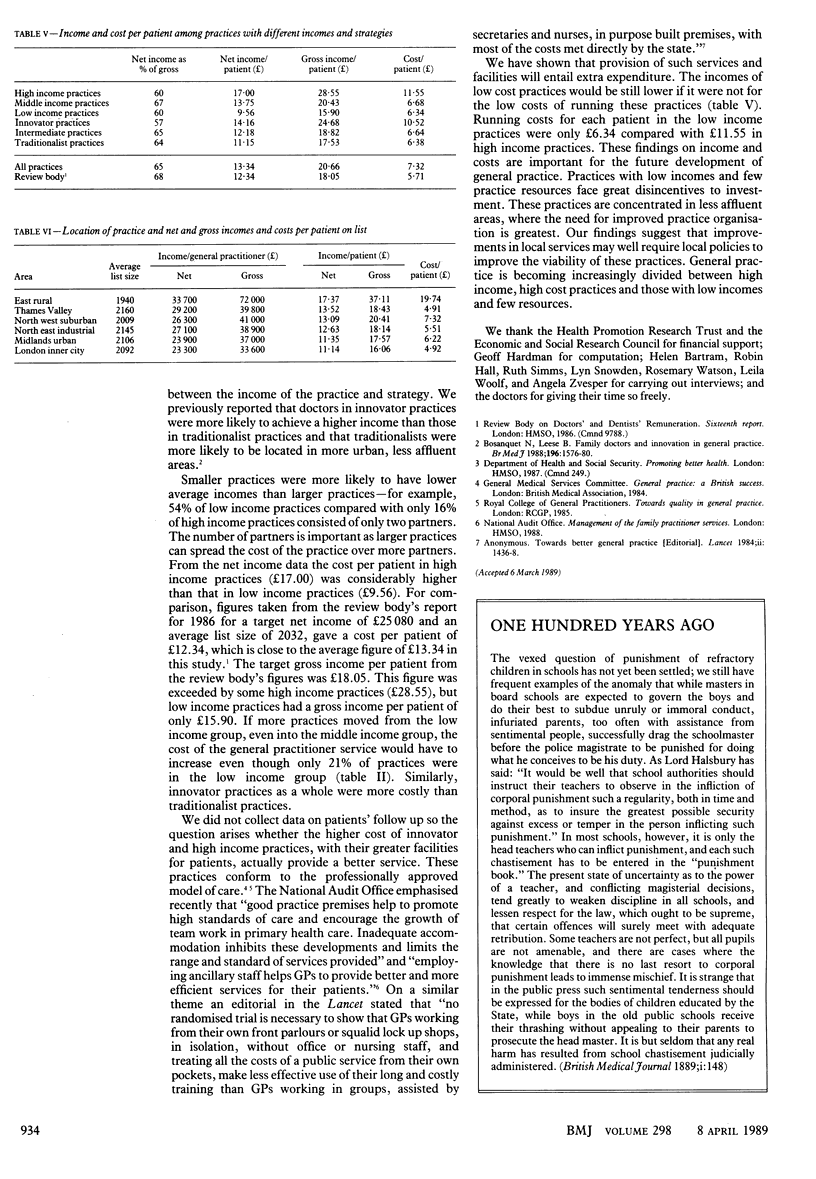Abstract
The Review Body on Doctors' and Dentists' Remuneration deals with average incomes and costs, and little evidence is available on local variability. In a study on general practice the distribution of high and low incomes was assessed. High income practices (defined as those with net incomes per partner of more than 35,000 pounds a year) were more likely to be larger, to have younger partners, and to be located in affluent areas. Low income practices (with a net income of less than 20,000 pounds per partner) were smaller, located in more urban areas, and more likely to have Asian partners. High income practices had higher costs per patient and more staff resources. Low income practices had fewer practice resources and faced great disincentives to investment. These practices were concentrated in less affluent areas, where the need for improved organisation of practices is greatest. General practice is becoming increasingly divided between high income, high cost practices and those with low incomes and few resources.
Full text
PDF


Selected References
These references are in PubMed. This may not be the complete list of references from this article.
- Bosanquet N., Leese B. Family doctors and innovation in general practice. Br Med J (Clin Res Ed) 1988 Jun 4;296(6636):1576–1580. doi: 10.1136/bmj.296.6636.1576. [DOI] [PMC free article] [PubMed] [Google Scholar]


